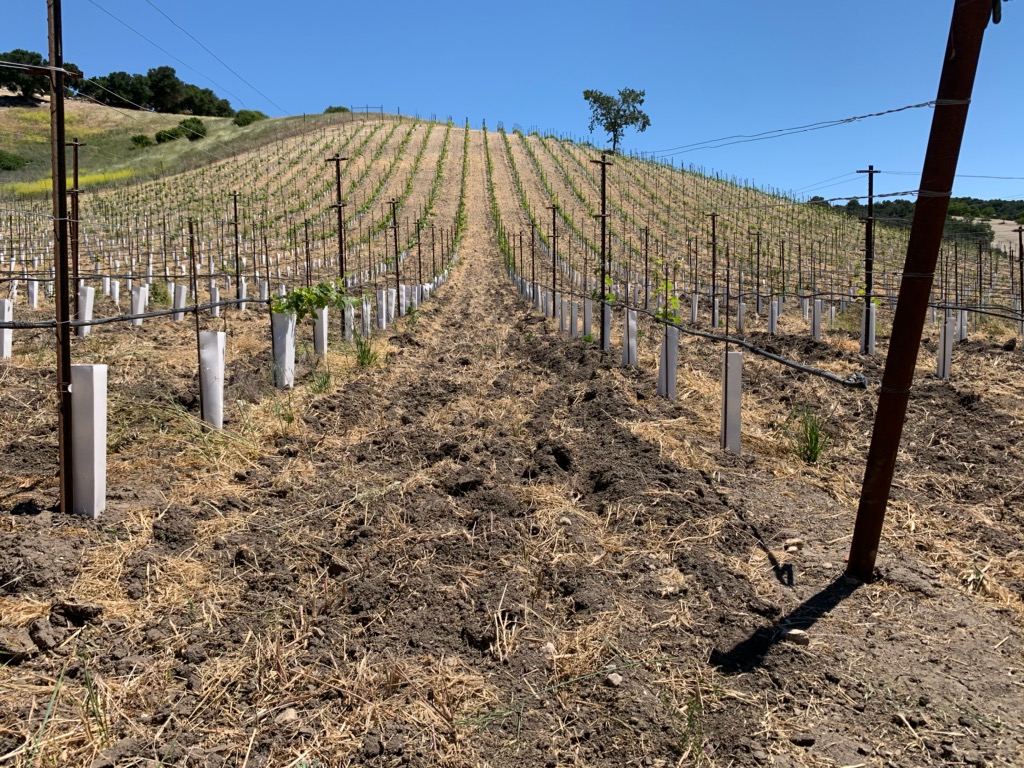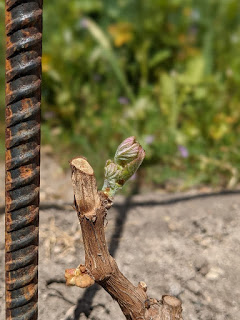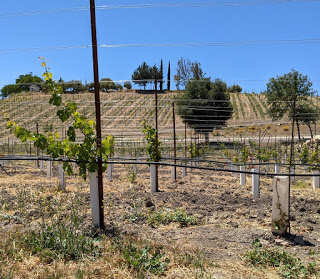We just finished mowing and disking under the cover crop. The picture to the left shows the vineyard just a week before and the picture below shows the vineyard after disking.
Regenerative Farming
Disking incorporates the green material and our beautiful, nitrogen-rich cover crop into the soil – adding organic matter that will compost itself and break down into more nutrients and help our water storing capacity. The process gets the vineyard clean and ready to go for the upcoming months. It also takes away the water competition between the vines and cover crops. The cover crops in our vineyard use lots of water, which is great in the winter when we want to absorb that water instead of letting it run off and losing our top soil.
Nature’s Folly – Spring Frost
Although springtime can be absolutely beautiful in Paso, there are still threats we have to be wary of… especially frost! Paso has beautiful 75 degree days that allow vines to push. However, because of Paso’s huge diurnal shift, nights can still get cold and vines are super susceptible to those below freezing temperatures. We had a very late frost this year in mid may. Only a little bit of damage in the low spots of Armaa.N Vineyard (cold air settles down and burns the vines’ leaves a little bit). Fortunately, these vines will survive. They will regrow and push out of it! Our top priority is making sure the vines stay nice and healthy and have everything they need to recover from the frost. We did lose a little bit of time but vines will be just fine and push right through it. 🙂 The photo below shows the difference between vines that the cold didn’t effect (left) and vines that had shoot damage from the colder weather (right).
We had a long and cold winter in Paso this year, and as a result we had some vines die from the Syrah, Cab Franc, and Sangiovese blocks. This is called cold damage or winter kill. There was a very minimal amount of damage done – we’ll do a little bit of replanting and those vines will be able to grow and catch up with the others. Overall, we are extremely happy with how things are going & growing!
Irrigation
Another goal we are working towards with Armaa.N is to establish a deep root system. We are achieving this through our irrigation practices. The first year we planted the vines, we wanted to give them short sets for irrigation because the roots are closer to the surface. Now we’re trying to make these vines more self-sustainable, so we’re giving them longer sets so the roots follow the water down. The vines will eventually be able to take care of themselves and we won’t need to irrigate (ideally at all!) in certain sections of the vineyard. We want the vines to struggle because it will help with concentration of color and berry size! When we chose our vines, we specifically used drought tolerant rootstocks so that the roots will push really deep to get to find a water source.
What’s Happening Next?
In the upcoming weeks, we will do field grafting on vines that a little bit of replanting. We will also be training the vines for the strongest shoot to carry on as the trunk of the vine.





